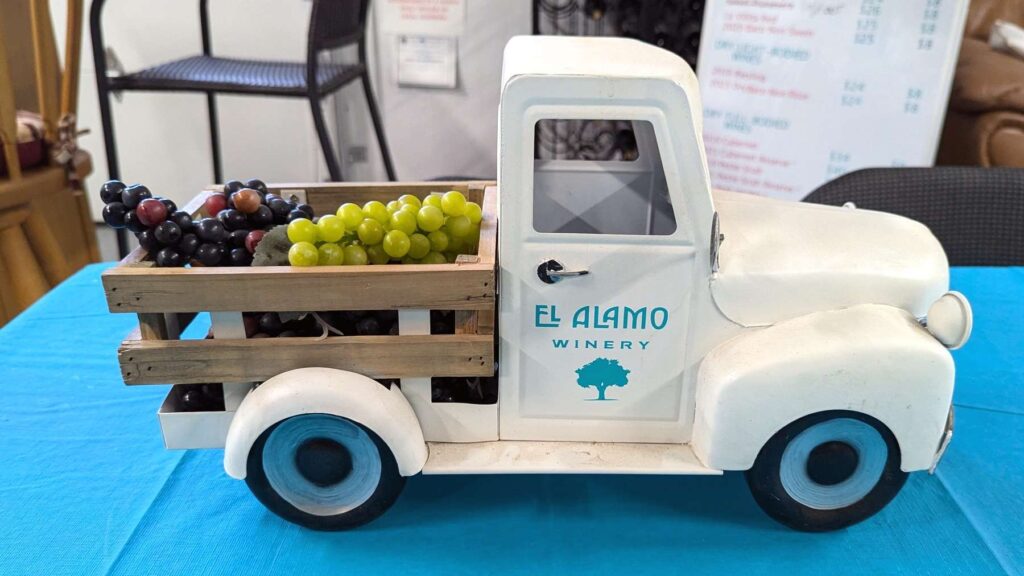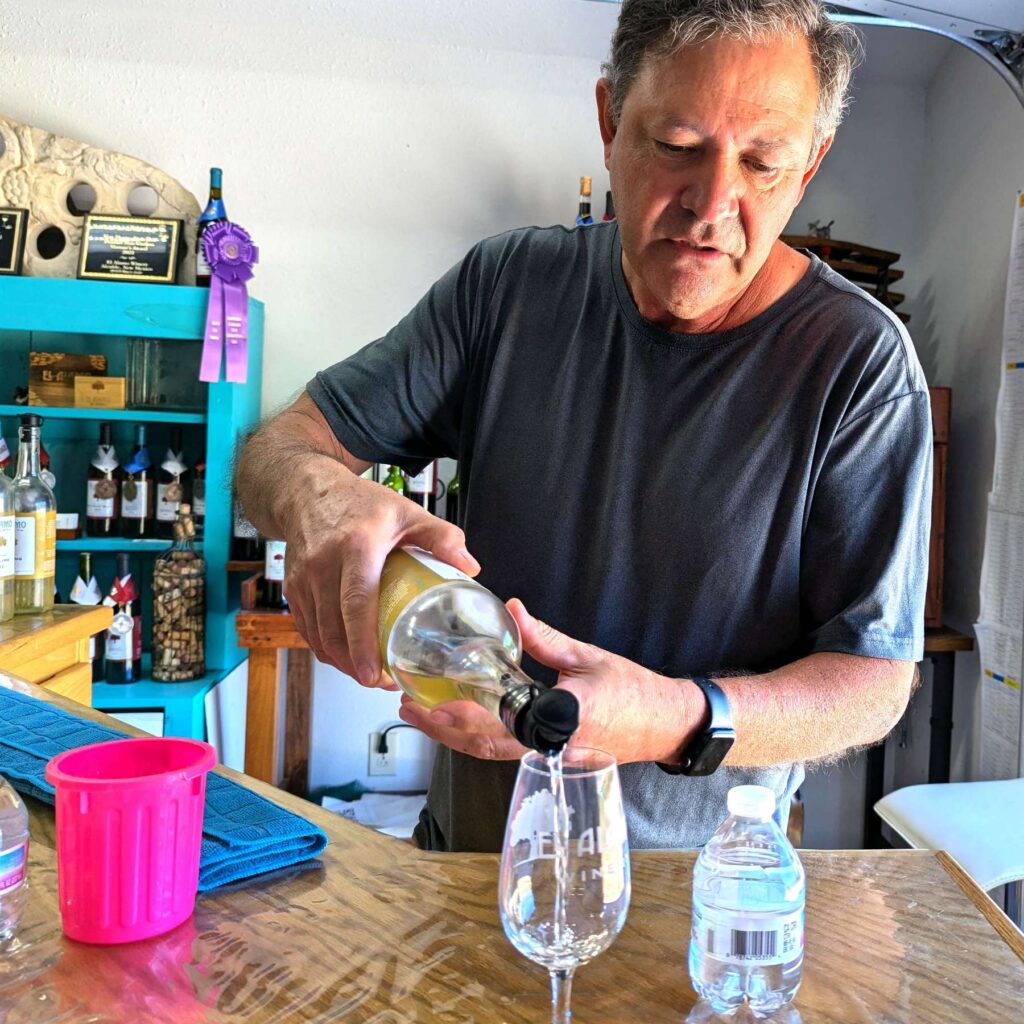
You might be forgiven if you thought Joseph Martinez named his winery in Alcalde, New Mexico, after the San Antonio (Texas) fortress where Davy Crockett and Jim Bowie perished after holding out bravely against overwhelming odds.

After all, Alcalde is hardly the most hospitable climate for wine grapes. But Martinez named his operation instead for the gigantic cottonwood tree that towers over the acequia madre where it runs through his property. In Spanish, ‶El Alamo″ means ‶the cottonwood.″ The same irrigation ditch that coaxed that cottonwood into one of the largest in New Mexico also slakes the thirst of El Alamo’s modest vineyard of Riesling and Baco Noir grapes.
New Mexico’s principal wine-growing regions lie at high altitudes in the southern part of the state (the Mimbres Valley AVA in the southwest, the Mesilla Valley AVA in the southeast). So our expectations for El Alamo Winery (127 County Road 41, Alcalde, NM; 505-920-9516; elalamowinery.com/) were muted when we made a tasting reservation online. After all, we were more than 300 miles north of prime New Mexico wine country. But we were already in town, attending an event at the historic Los Luceros ranch (253 County Road 41, Alcalde, NM; 505-476-1165; nmhistoricsites.org/los-luceros).
Or so we thought. Only producing about 300 cases a year, Martinez makes a dizzying array of dry and sweet wines from the two grapes he does grow, and another dozen or so wines from grapes he buys from southern New Mexico. If you’re game (and we were), the tasting touches on all the available wines. Notably, El Alamo tends to dominate the ribbons for both estate and non-estate wines at the state fair.
Subtle variations give El Alamo wines a broad range

It was a memorable experience as we drank from older to newer, lighter to heavier, and drier to sweeter. Every one of the wines was well-made, though the sweeter wines were less our taste. (On the other hand, a family at the same tasting went home with a bunch of bottles of sweet and semi-sweet wines.)
Martinez is a retired mechanical engineer who worked for 37 years at nearby Los Alamos, home of the Manhattan Project. He learned how to make wine from kits. ‶This is not rocket science,″ he quipped, and he should know. But he has the palate, talent, and meticulousness required to make good wine. El Alamo’s Rieslings have a distinct honey and pear profile, though the 2023 is maybe the best of the last four years. The fruit was very ripe and developed some luscious peach notes in the bottle.
Martinez is also making credible dry red table wines from Tempranillo, Cabernet Sauvignon, and Sangiovese grapes, mostly aged in oak. They are tasty, but they have a lot of competition in the $35-$40 per bottle price range. The sleeper wines at El Alamo, though, are made from the French-American hybrid Baco Noir — one of the few such hybrids to avoid the ‶foxy″ overtones of grapes with a North American heritage.
At its best, Baco Noir has an intense fruitiness with cherry notes and strong, almost inky bramble fruit. Martinez has hit on a novel way to cope with Baco’s one shortcoming — lack of tannins — while rounding out the fruitiness. He ages them in used Bourbon barrels. The resulting wines are smooth and rich, equally suited to red meat dishes or sipping beside the kiva fireplace on a cold winter’s night.
